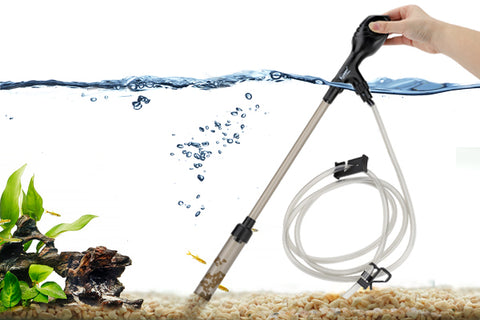The fish disease is so common that most aquarists develop some experience with it. An outbreak can happen suddenly or a fish may have subtle signs for a week or longer before the actual symptoms appear. In this article, we try to explain what fish Dropsy is and how to treat it.
Fish dropsy
Fish dropsy is a disease that affects the kidneys, skin, and scales caused by a bacterial infection. It is common among Salmon, Trout, and also Catfish. This is a very serious bacterial disease among fish and can be easily diagnosed by identifying the symptoms. Fish that have this disease need to be managed quickly to avert further loss of fish.
What are the symptoms of fish dropsy?
The symptoms of fish dropsy include:- A fish that is bloated and has scales that are standing off from the body.
- The eyes may also be bulging.
- Loss of appetite and lethargy.
- The fins may be clamped down and the fish may have difficulty swimming.
- As the disease progresses, you may see white spots on the skin or fins.
- There may also be swollen belly, scales standing out, fins clamped against the body, loss of color/pale gills, and ulcers.
If you notice any of these symptoms in your fish, it's important to act quickly and seek professional help. Fish dropsy is a serious disease and can be fatal if not treated properly. These mentioned symptoms are a quick indication of fish dropsy.
What are the causes of fish dropsy?
The exact cause of fish dropsy is unknown, but it is thought to be caused by a combination of factors, including stress, poor water quality, a bacterial infection, and others.
1. Stress
There are many potential causes of fish dropsy, but the most likely cause is stress. When a fish is stressed, its immune system is weakened and it becomes more susceptible to disease. Stress can be caused by a variety of factors, including:- Poor water quality
- Overcrowding
- Changes in temperature or pH level
2. Poor water quality
One of the most common causes of stress in fish is poor water quality. Ammonia, nitrites, and other toxins can build up in an aquarium or pond and cause stress and illness in fish. It's important to maintain freshwater quality to prevent these problems.
3. Bacterial infection
Fish dropsy may also be caused by a bacterial infection. Pathogens such as Aeromonas hydrophila or Vibrio cholerae can enter the body through the gills or skin and cause an infection. These infections can be difficult to treat and often result in death.
4. Genetics
Some fish are simply more susceptible to dropsy than others due to genetic factors. If your fish has a family history of dropsy or other diseases, it may be more likely to develop the disease itself.
5. Improper nutrition
Other potential causes of fish dropsy include improper nutrition and parasites. Fish that are not properly fed can become stressed and susceptible to disease. Additionally, parasites such as flukes and worms can invade the body and cause an infection. These infections can be difficult to treat and often result in death. While feeding more than usual can cause fish to develop a swollen abdomen, it's usually a symptom of another problem.
Treatments
There is no known cure for fish dropsy, but there are some treatments that may help to ease the symptoms and improve the fish's chances of survival.
1. Quarantine & use of antibiotics
The most important thing you can do is to quarantine the affected fish and treat them with antibiotics. Antibiotics will not cure the disease, but they may help to prevent secondary infections and improve the fish's chances of recovery.
2. Improving water quality
One of the best things you can do for sick fish is to improve the water quality in their tank or pond. This means regular water changes, maintaining proper filtration, and avoiding overfeeding.
3. Adding stress-relievers
There are several products on the market that contain stress-relievers such as aloe vera or chamomile extract. These can be added to your tank or pond to help reduce stress on your fish.
Adding some plants to the tank can help to improve water quality and add oxygen. Plants also provide a place for fish to hide if they feel stressed.
Adding a bubbler or aerator can also help to improve water quality and add oxygen to the water. These devices can also help to reduce stress by creating a gentle current in the water.
4. Using saltwater baths
Some aquarists believe that saltwater baths can help to treat fish dropsy by reducing swelling and promoting healing. To use this treatment, simply add 1 tablespoon of aquarium salt per gallon of water in your tank or pond (do not use more than this amount). Let your fish soak in the saltwater bath for 15-20 minutes before returning them to their regular tank or pond.
Prevention measures
It is important to take proper preventive measures and care of Fish to avoid any diseases. Following are things you can adopt to minimize the fish dropsy.
1. Regular water change
A regular water change schedule is one of the best things you can do to prevent disease in your fish. Water changes remove toxins and other pollutants from the water, and they also help to replenish important minerals and nutrients. A water change should be done at least once a week, and more often if you have a high-stock tank or pond.
2. Proper filtration
Another important preventive measure is to use proper filtration for your tank or pond. Filters help to remove toxins and other pollutants from the water, making it easier for your fish to stay healthy. There are many different types of filters available on the market, so be sure to choose one that is appropriate for your particular setup.
3. Proper dieting
A proper diet is essential for fish health. Overfeeding can lead to a build-up of toxins in the water, which can stress fish and make them more susceptible to disease. It's important to feed your fish a high-quality diet that is low in filler ingredients. There are several commercial diets available, or you can make your own with fresh, natural ingredients.
5. Avoid overcrowding
Crowding can lead to a build-up of toxins in the water, which can stress fish and make them more susceptible to disease. It's important to avoid overcrowding your tank or pond and to provide plenty of hiding places for your fish. If you're introducing new fish to your tank or pond, it's important to quarantine them first.




Comments (0)
Back to Fish Care